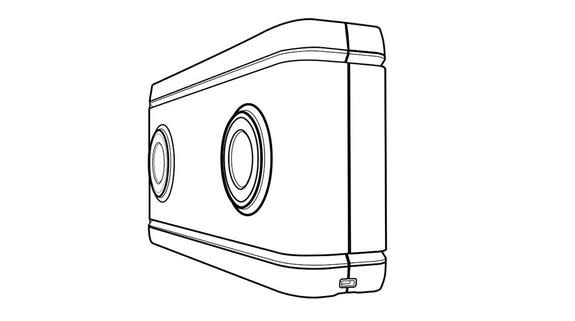YouTube's VR 180 and Daydream cameras bring immersive video to traditional creators

Even if you've never strapped on a virtual reality headset, if you're a heavy YouTube user, you've probably stumbled upon a 360 video on the site and thought: This looks interesting, but very weird and hard to watch in my browser.
YouTube has been obviously been paying attention to these kinds of comments and has come up with a solution that serves both VR enthusiasts and non-VR users alike. It's called VR 180—and it's going to be available for YouTube's creators to begin making next-level immersive content.
SEE ALSO: Is video really the future of VR?
Like most things involving VR in these early days of mainstreaming the platform, there are upsides and downsides with VR 180.
First, the good: These videos look much better than the 360 videos you'll currently find on YouTube — which aren't going away, but will no longer be YouTube's primary focus for immersive video on the site.
Current 360-degree videos on YouTube use equirectangular projection, which gives you the perspective of looking at the world (the 360 video) as though you were standing inside a globe.
This method delivers the best quality at the top and bottom (the "poles" of the globe-shaped video) of the video, with the middle of the video (usually the most important, and most viewed part) suffering in terms of quality.
What VR 180 does is focus on just the 180-degree field of view in front of you, thus allowing for higher resolution (up to 4K) across the entire video image.
The other improvement VR 180 offers is a stereoscopic view, which means that instead of a flat looking, panoramic video (common on YouTube 360 videos), objects in the background and the foreground are presented in way that offers a sense of depth. That added sense of depth not only improves the immersive experience if you're viewing the video through a VR headset, it delivers a more engaging video even in the YouTube browser.
So while the "180" down from 360-degree video sounds like you're getting less, in effect, you're actually getting more. I know because I've already tried VR 180, first by viewing VR 180 video via the YouTube app on a Pixel phone, and then through the Daydream View headset.
This isn't a small improvement over the current 360-degree YouTube videos. The difference is significant enough that I'd now rather watch most immersive video content on YouTube via the VR 180 format instead of the traditional 360-degree view.
It should be noted that with VR 180 you lose the ability to pan around the globe-like video environments of YouTube 360-degree videos. But after watching many VR videos of all types in most of the VR headsets, I'm beginning to think that this approach may actually allow immersive video directors to better control narrative and story flow, while boosting image quality and losing none of the "you are there" feel to the video.
That brings us to the other development coming from YouTube: Rolling out VR 180 cameras with device-maker partners Lenovo, LG, and Yi. Prices for the devices haven't been revealed, but YouTube's VR product lead, Erin Teague, says they'll be priced in the range of traditional, consumer point-and-shoot cameras (translation: you won't need to take out a bank loan to buy one).

Image: Youtube
"We took a step back to think about how to democratize VR video creation," says Teague. "We think [VR 180 and the VR 180 cameras] will unlock a whole new generation of VR content creators."
In addition to those cameras built to work natively with VR 180, the Google Daydream team will be working with camera makers on a certification program to help existing camera makers find ways to get their devices to harness the VR 180 format. Similarly, YouTube is also working with Adobe on ways to allow video editors who use Premiere to able to use the same editing techniques they're accustomed to with newly created VR 180 footage.
"Today with 360-degree, stereoscopic cameras, to use them requires very specific skills. The equipment can be expensive, and the method used to produce those videos can be very complex because you have to worry about what's in front of all the cameras in a circle," says Teague. "There's no ability to hide the filming crew, or the various equipment. Creators have to significantly change their production techniques. Our goal with VR 180 is to simplify VR video production for all creators–consumers and high-end video producers as well."
The VR 180 format (which, unlike 360-degree videos, requires no stitching) will also be available to users who want to broadcast live VR 180 videos, with the higher resolution and stereoscopic attributes intact.
In terms of creating content for the new format, while the official VR 180-friendly cameras are being produced for release later this year, existing users in the YouTube Creators program can contact YouTube Spaces managers around the world to get access to VR 180 cameras and start shooting video natively in the format.
Will this "less is more" approach really kickstart VR video creation and viewing? As always, that's up to the audience. But by removing the technical complications associated with current 360-degree videos, we're looking at a new path for immersive video that may gain traction, particularly among those not ready or equipped to reinvent their entire video production workflow.
VR video is still a rarified space when it comes to drawing a large number of users, but if anyone can figure out the path toward mainstreaming VR video, YouTube has better odds than most.
WATCH: Say goodbye to itchy bug bites with this electric pen


